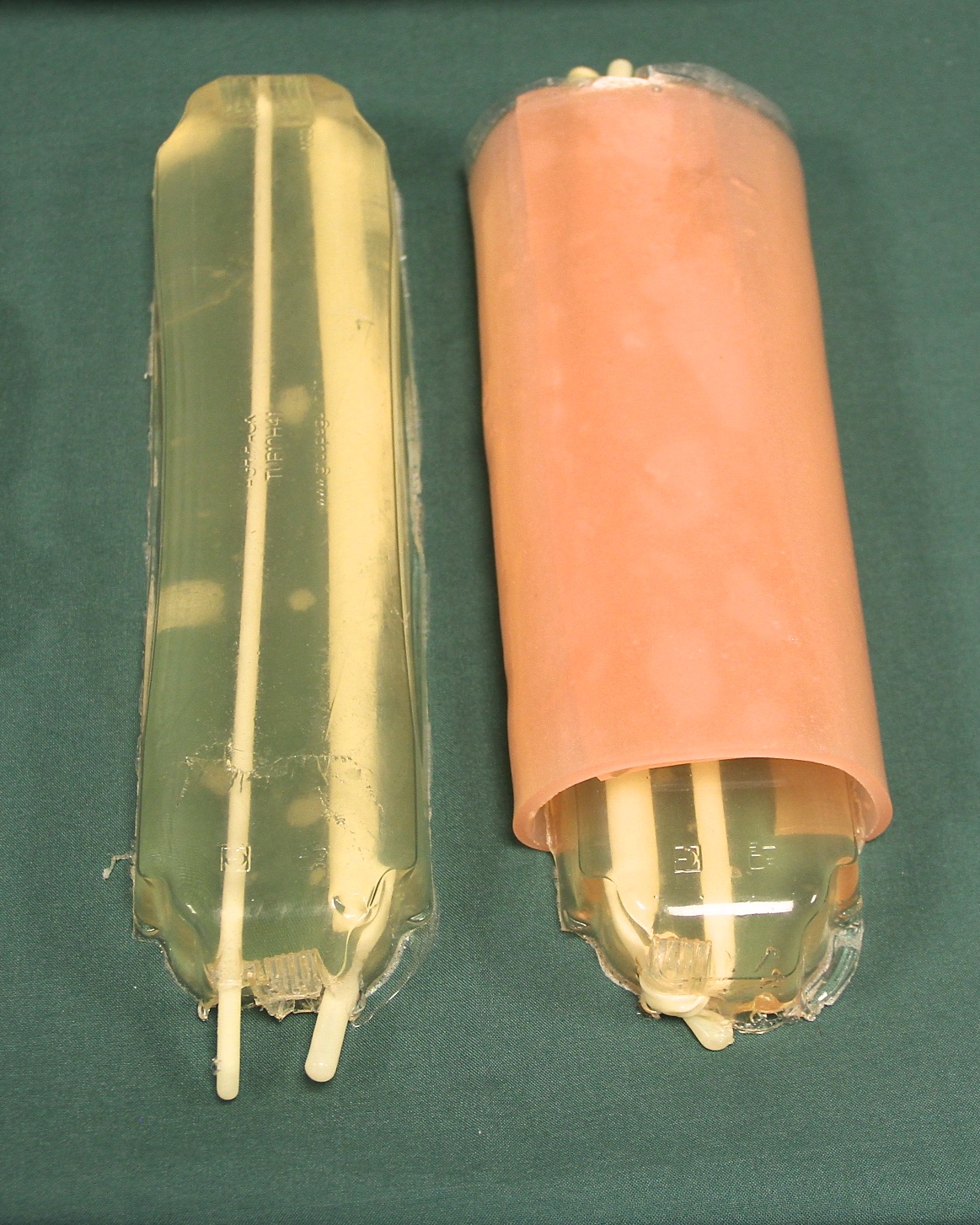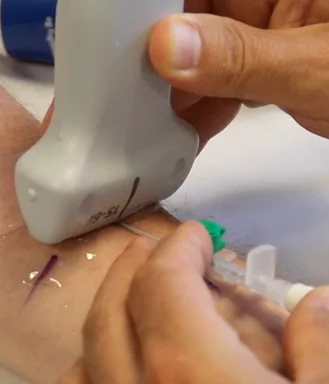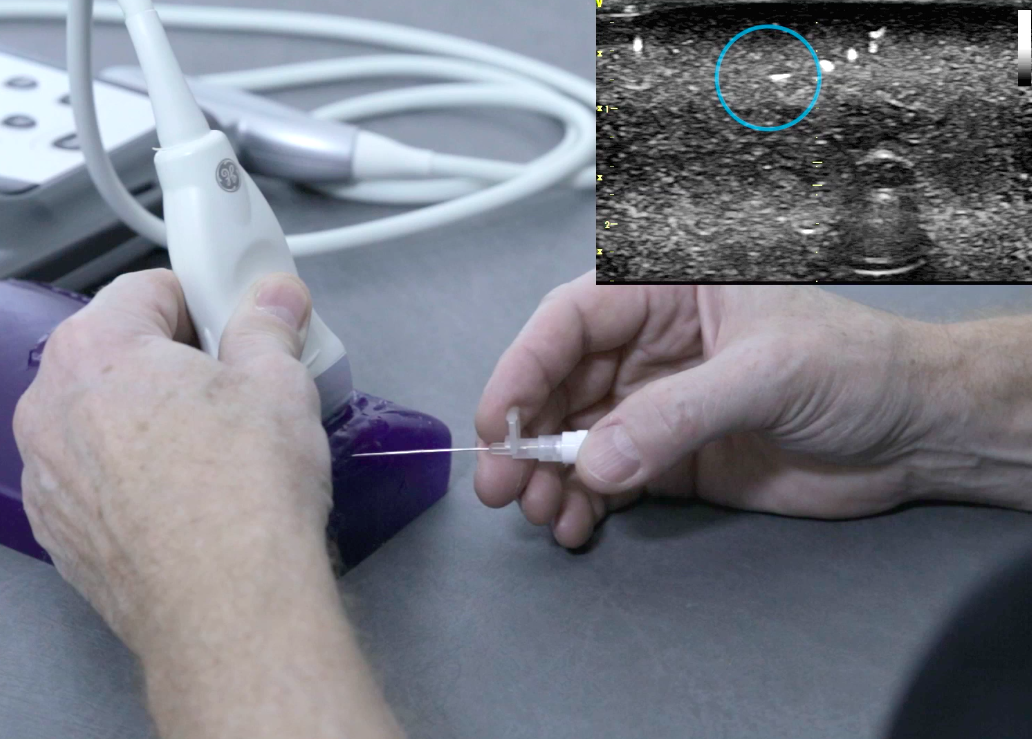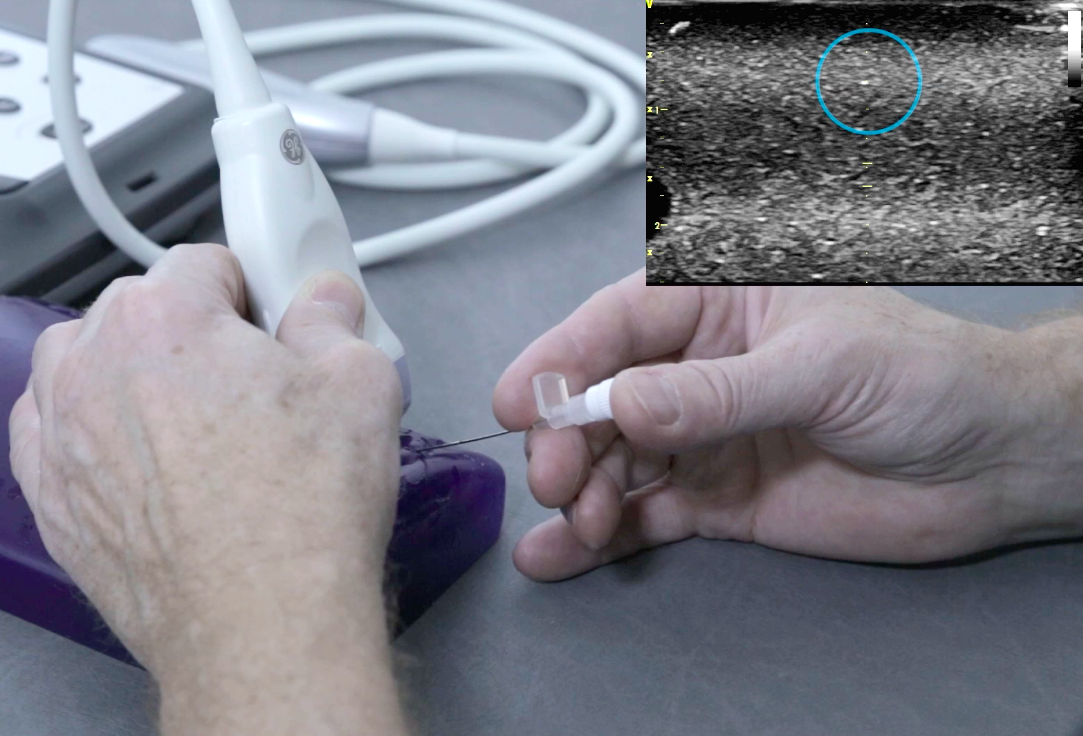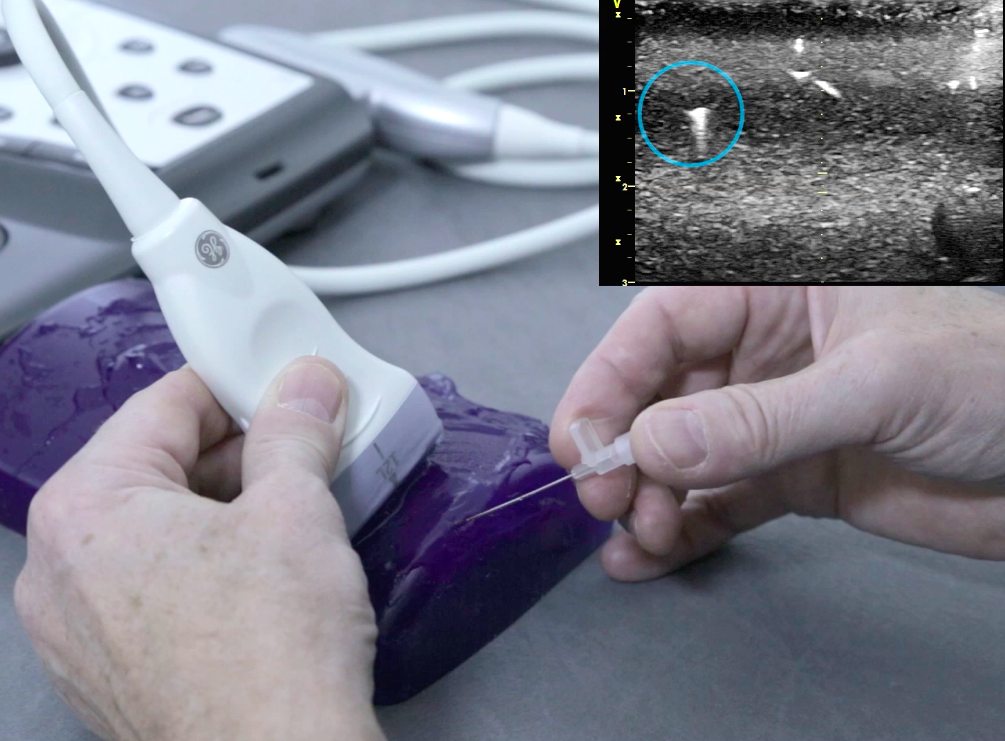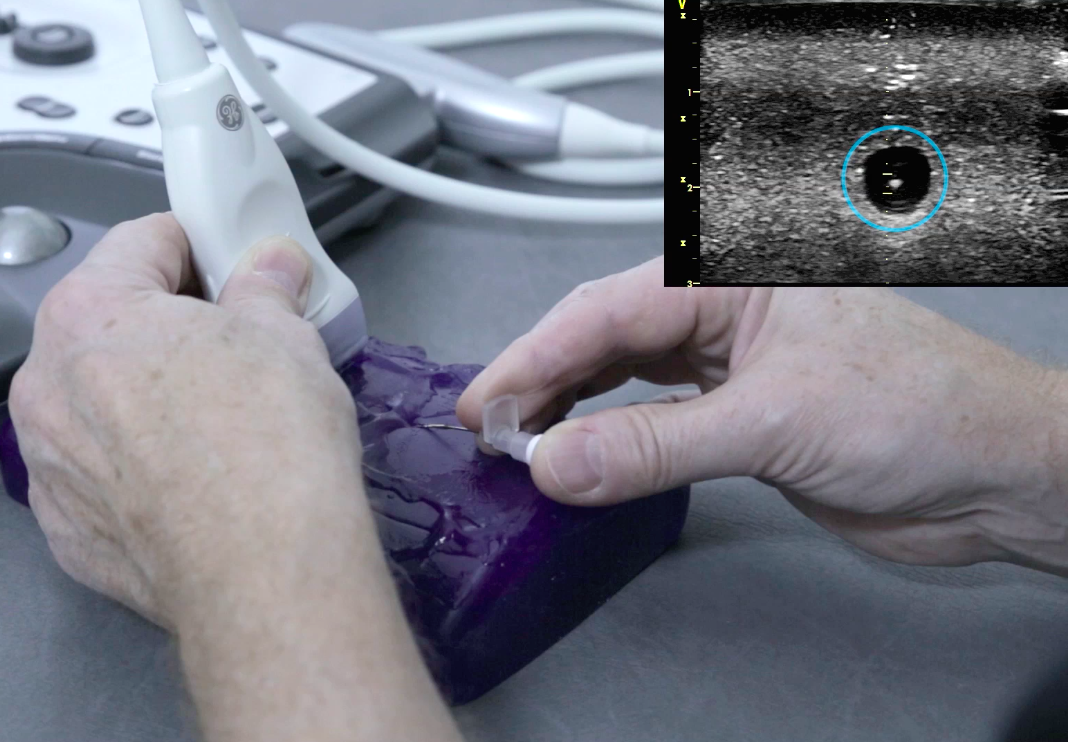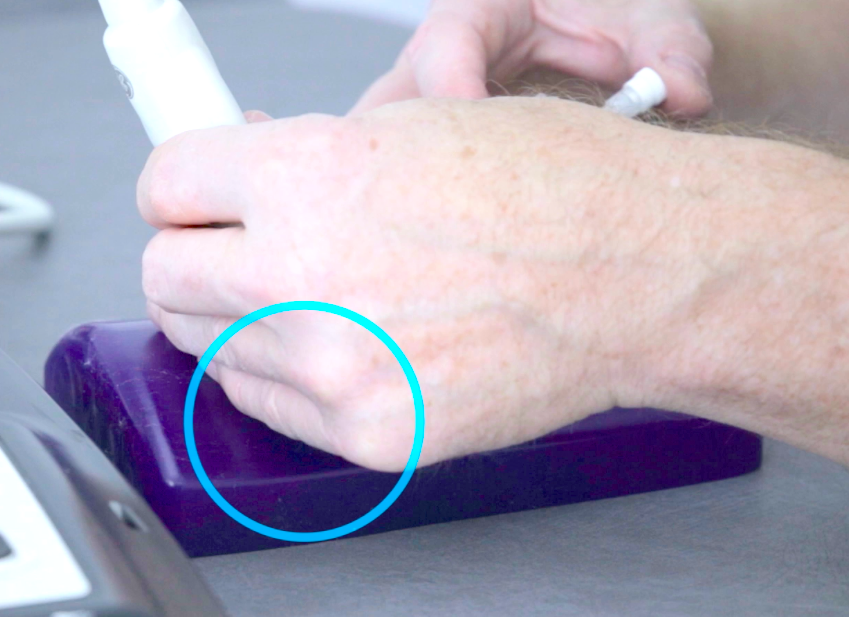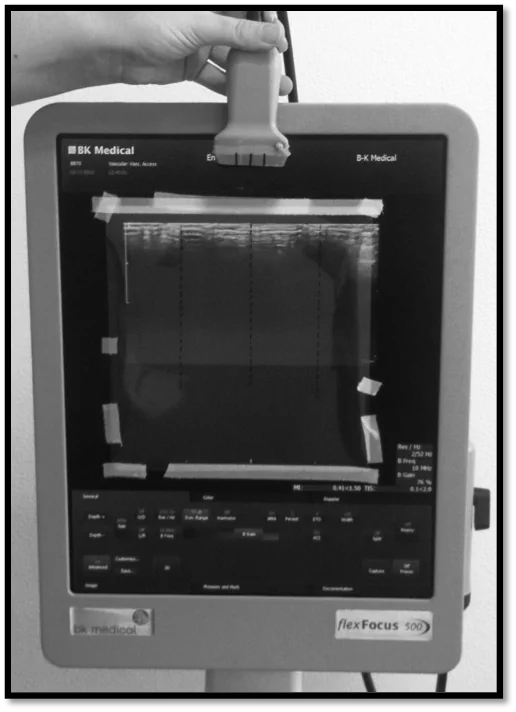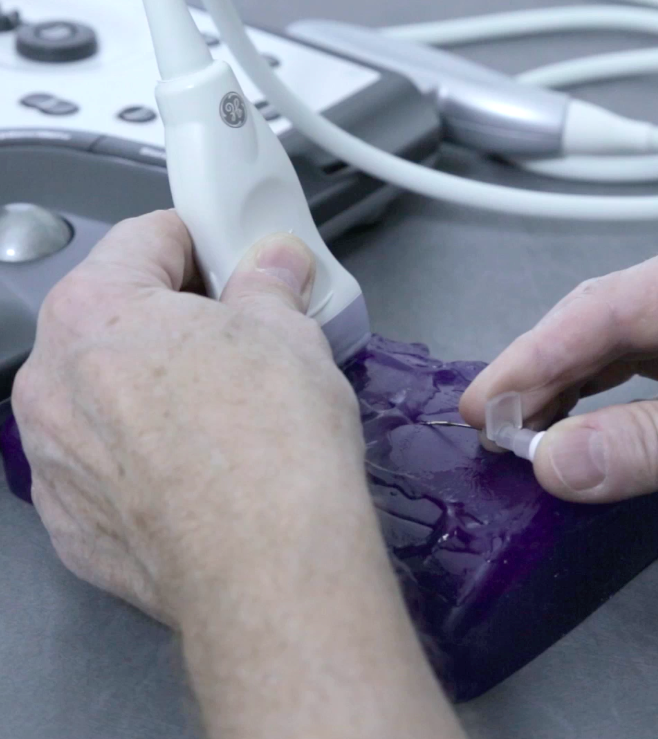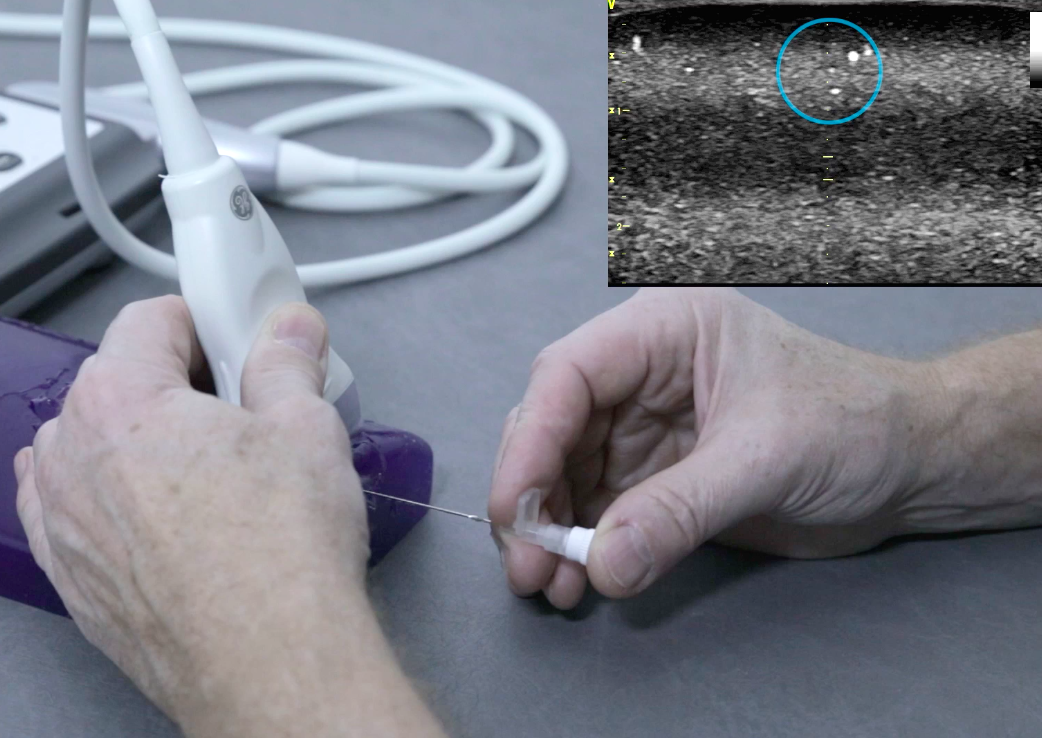You can make your own training model using a mixture of warm water and 15% pure gelatine*
This creates a realistic soft tissue echogenicity and allows a good sonographic transmission
The model can be made in a rectangular container with one or more balloons filled with gelatine. These provide the targets for the needle insertion
The surface of the phantom can be covered by non-transparent gelatine layer made by adding flour to the liquid gelatine mixture in order to make the targets invisible to the human eye
*E.g. Gelita Gelatine, from GELITA Sweden, SE-264 23 Klippan, Sweden. http://www.gelita.com
